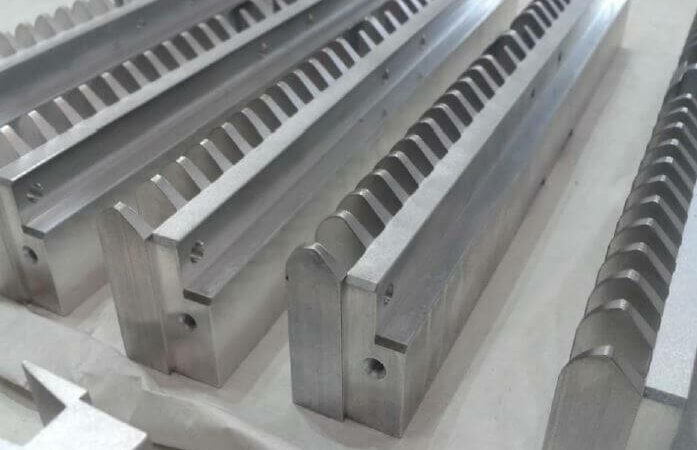
When manufacturing metal parts, selecting the right process is essential to balance strength, complexity, cost, and performance. Three primary methods—extrusion, casting, and forging—each offer unique benefits and limitations. Here’s a breakdown to help engineers choose the best solution for their needs.
- Process: A metal billet is forced through a die to form specific cross-sections.
- Advantages:
- Produces a wide variety of shapes with enhanced mechanical strength from an elongated grain structure.
- Lower tooling costs and ideal for high-volume production.
- Disadvantages:
- Limited to 2D shapes, with potential surface defects like oxidation or cracking.
- Lower stiffness compared to forging.
- Best For: Simple shapes or high-volume projects where strength isn’t the top priority.
Casting
- Process: Molten metal is poured into a mold to create complex shapes.
- Advantages:
- Excels at producing intricate geometries and large parts, including no size limit in sand casting.
- Can be cost-effective depending on the application.
- Disadvantages:
- Lower strength than forged parts, with risks of internal defects like porosity or surface voids.
- Often requires additional machining for a quality finish.
- Best For: Large or complex parts where cost matters more than maximum strength.
Forging
- Process: Solid metal is compressed under extreme force into high-strength parts.
- Advantages:
- Superior strength and structural integrity due to a refined grain structure.
- Ideal for stress- and shock-resistant components (e.g., pistons, gears).
- Closed-die forging supports complex 3D geometries, tight tolerances, and eliminates defects like porosity.
- Offers a high-quality finish.
- Disadvantages:
- Higher costs, especially for intricate designs or smaller runs.
- Best For: High-performance, durable parts with complex shapes.
Key Considerations for Engineers
- Need strength and 3D complexity? Choose forging, especially closed-die forging, for top-tier durability and precision.
- Prioritizing cost and volume? Extrusion suits simpler, high-volume designs.
- Complex but less critical parts? Casting handles large or intricate shapes economically.
Our Expertise in Closed-Die Forging
At PA in China, we specialize in die forging, crafting high-quality aluminum parts for medical, automotive, and renewable energy industries. Leveraging advanced 3D technology, heat treatment for added strength, and multiple options for finishing process, we deliver precision and durability from ounces to over 25 pounds. With 25+ years of experience, our diverse clients trust us to collaborate on their most complex designs, providing creative, reliable solutions.

05.06.2025
Hi there,
With aluminum forging, I am looking at designing a heatsink for high performance aerial UAV. Naturally looking for low cost but very high performing part. It will form part of the chassis, must have very high strength and heat conductivity. Can you please comment on that?
Also, what are the shape options and minimum order quantities for forged aluminium parts?
Thanks,
Tom
05.06.2025
Tom,
Aluminum casting may seem appealing due to its cost-effectiveness and ability to form complex shapes, but it’s a poor choice for outdoor applications. Here’s the technical breakdown:
Porosity: A Critical Flaw
Porosity—microscopic voids formed during the casting process—compromises the material’s integrity. In outdoor environments, exposure to moisture (rain, humidity, or saltwater) allows water to infiltrate these pores, initiating internal corrosion. While aluminum’s natural oxide layer offers some protection, it’s ineffective once corrosive agents bypass it through these defects. For devices in harsh conditions, this can lead to premature failure.
Mechanical Limitations
Cast aluminum typically has lower tensile strength and ductility compared to wrought alloys. Outdoor parts often face mechanical stress, impact, or vibration—conditions where castings are prone to cracking or deformation. This makes them unreliable for load-bearing or dynamic applications.
Surface Finish Concerns
The rough surface finish of cast aluminum can undermine sealing integrity or aesthetic requirements. For outdoor machines needing tight tolerances or weatherproof enclosures, this is a significant drawback.
Alternatives and Recommendations
For critical outdoor components, consider wrought aluminum, stainless steel, or composites, which offer superior strength, corrosion resistance, and durability. If casting is unavoidable, mitigate risks with rigorous porosity control and protective coatings—but even then, it’s a compromise.
In short, the risks of porosity, reduced mechanical properties, and surface imperfections make aluminum casting a liability for outdoor use. Evaluate your application’s demands and opt for a process that ensures reliability.
End of my rant, sorry for a long post. Had to get it of my chest 😉
05.06.2025
Hi Tom,
There are few option here.
For ultra low cost and reasonable heat dissipation best to use aluminum extrusions, here:
https://www.pa-international.com/aluminium/extrusion/
But, if it is high performance design, we can offer cutting edge forged aluminum parts with integrated heatsinks. Those been successfully used in aerospace and are ultimate performance from heat dissipation point of view and structurally. Take a look at the image carousel: https://www.pa-international.com/aluminium/heatsink_manufacturer/
Those are usually forged, CNC machined, Heatpipe pressed in place.
Send us a concept drawings with NDA, we can assist to optimize the design from manufacturability, mechanical and thermal perspective.